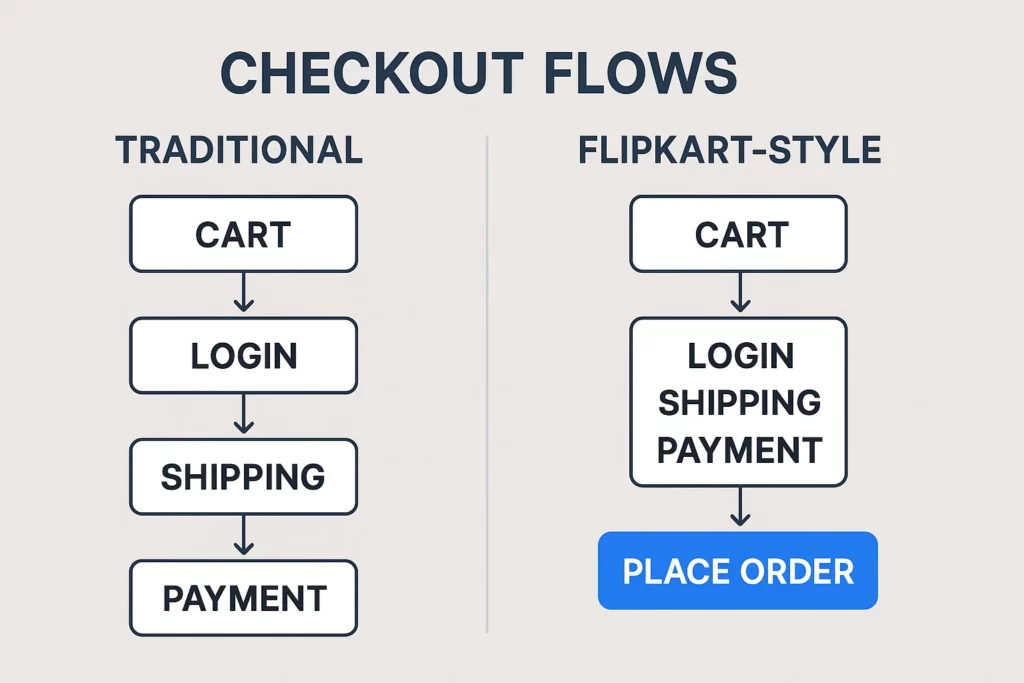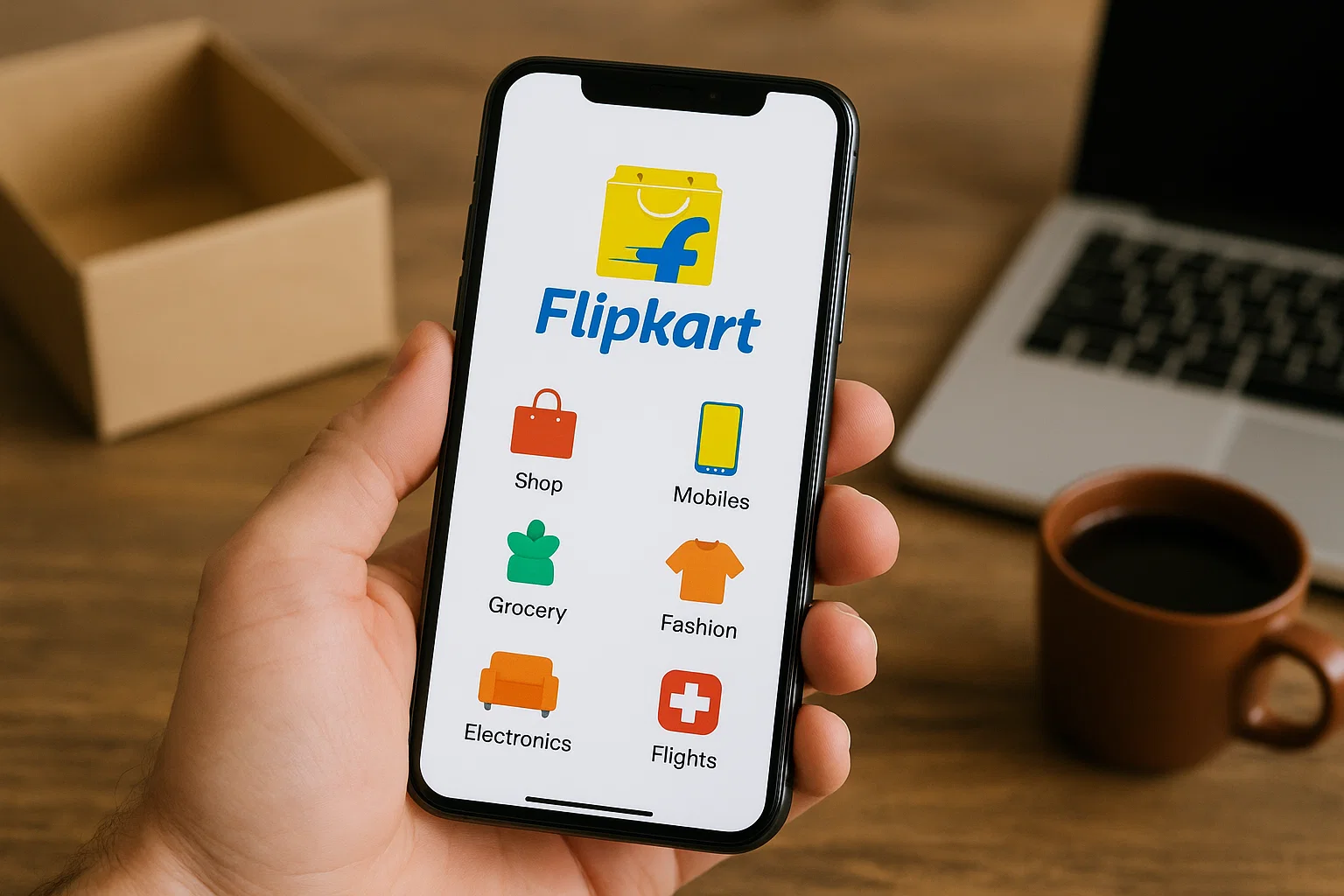Let’s rewind to 2007. Two IIT graduates in India decided to sell books online. Sounds simple, right? Fast-forward a few years, and that little idea morphed into Flipkart — one of the biggest eCommerce giants in Asia, giving Amazon a serious run for its money. If you’ve ever ordered a smartphone on a flash sale or binge-browsed midnight deals, you’ve probably met the Flipkart app.
Now, picture this: You’re an ambitious founder or a digital creator wondering, “What if I could build the next Flipkart?” Spoiler: It’s possible — and not just for shopping cart dreamers. Flipkart’s app model isn’t just about selling products; it’s about crafting sticky user journeys, seamless mobile UX, and data-driven personalization that keeps users coming back.
If you’re thinking about launching your own eCommerce app, Flipkart is the blueprint worth studying — and at Miracuves, we specialize in cloning success stories like this into powerful, ready-to-scale digital platforms.
What is the Flipkart App?
Flipkart is India’s answer to Amazon — a mobile-first eCommerce app where users can shop for everything from smartphones and fashion to groceries and furniture. It’s not just a shopping app — it’s a fully-loaded online marketplace with hyperlocal delivery, real-time price updates, wishlists, dynamic ads, and even mini-games.
And here’s the kicker: over 75% of Flipkart’s traffic comes from mobile, making its app not just a sidekick but the main hero. Built for Android and iOS, the Flipkart app is optimized for low-bandwidth zones, tier-2 cities, and multilingual audiences.

Trust our eCommerce app development company to deliver a Flipkart-inspired solution with advanced features, seamless UX, and powerful backend tech.
Key Features of the Flipkart App
1. User-Centric Navigation
Flipkart’s home feed isn’t just a grid of items — it’s a personalized journey. The app remembers your browsing patterns, wishlist items, cart abandonments, and even your festival calendar.
- Smart filters for category-based searches
- Auto-suggestions in the search bar
- “Just For You” carousel powered by machine learning
2. Product Pages That Sell
Each product page includes:
- Images with zoom and 360° view
- Customer ratings, reviews, Q&A
- Price drops and combo offers
- “Flipkart Assured” badge for trust
Insight: The app treats reviews like gold — with photo uploads, verified tags, and voting on helpfulness.
3. Lightning-Fast Checkout
Nobody likes a 10-step checkout. Flipkart shrinks the process using:
- Saved addresses and cards
- UPI & Cash on Delivery (COD)
- Flipkart Pay Later for instant credit
- Real-time delivery date updates

4. Gamification & Loyalty
Flipkart cleverly uses gamification via:
- SuperCoins (reward points)
- Daily trivia & mini-games
- Spin-to-win coupons
This makes users want to log in even when they’re not buying. Brilliant.
5. Customer Support via Chatbots
Flipkart’s AI chat assistant helps users track orders, return items, and even file complaints — no human needed. And if it hits a wall? You get escalated to a real agent.
Example: Natural language queries like “Where’s my package?” or “Return my jeans” work seamlessly.
Explore the powerful features that make Flipkart a leading eCommerce platform in India’s digital marketplace.
Flipkart’s Business Model and How It Works
1. Marketplace Commission Model
Flipkart connects third-party sellers to buyers and takes a cut — usually 8%–20% depending on the category.
- Sellers list products
- Flipkart handles logistics (optional via Ekart)
- Payments go through Flipkart; sellers are paid after delivery
2. Logistics Monetization
Ekart, Flipkart’s logistics arm, charges sellers for storage, packing, shipping, and returns — another revenue stream.

3. In-App Advertising
Brands can pay to appear in search results, product carousels, banners, and push notifications. Think Google Ads — but for shopping.
Entities involved: Myntra, Samsung, Nike, Realme, etc.
4. Fintech Integrations
Flipkart Pay Later, EMI offers, and credit tie-ins allow users to buy more, more often — and Flipkart earns through processing fees or affiliate partnerships.
Explore Flipkart’s business model and see how it generates revenue through its marketplace, logistics, and tech-driven retail strategy.
Why Flipkart’s Model is a Clone-Worthy Inspiration
Flipkart has nailed three things every app founder dreams of:
- High-volume repeat users (thanks to loyalty perks)
- Diverse revenue streams (ads, payments, shipping, and more)
- Hyperlocal customization (language, currency, delivery windows)
Its mobile-first, India-centric strategy proves that with the right UX, you can build an app that doesn’t just sell — it sticks.
How Miracuves Can Help You Build a Flipkart Clone
If you’re thinking, “How do I even start building something like this?” — we’ve got your back. At Miracuves, we develop Flipkart-like clones that are:
- Mobile-optimized and scalable
- Feature-rich with payment, shipping, and seller modules
- Customizable for your niche — grocery, fashion, electronics, you name it
- Designed for fast go-to-market launch
Whether you want a hyperlocal delivery app or a multi-vendor marketplace — we bring the tech, so you can focus on growth.
Explore Flipkart’s revenue model, marketing strategy, and the complete roadmap to building a high-performance eCommerce app like it.
Conclusion
Flipkart’s success isn’t magic. It’s smart tech, ruthless optimization, and listening to users. If you’ve got a vision for your own eCommerce app — don’t just dream it, build it.
At Miracuves, we help innovators launch high-performance app clones that are fast, scalable, and monetization-ready. Ready to turn your idea into reality? Let’s build together.
FAQs
What technology does the Flipkart app use?
Flipkart uses a mix of native and hybrid tech stacks like Kotlin, React Native, Node.js, and machine learning for personalization.
Can I build a Flipkart clone for a specific niche?
Absolutely. Fashion, groceries, electronics, or even books — Miracuves can customize the platform for your vertical.
How does Flipkart handle returns and refunds?
Returns are processed via the app’s return feature. Flipkart offers refunds after item pickup or replacement, depending on seller policies.
How does Flipkart make money?
Through seller commissions, logistics fees, in-app ads, fintech services, and exclusive partnerships.
Is building a Flipkart-like app expensive?
Not really! You can build a Flipkart-like app for just $2,899 with Miracuves’ ready-made clone solution — fast, affordable, and fully scalable.
What’s the timeline to launch a Flipkart-style app?
With Miracuves, you can launch in 3 days.
Related Articles :-
- Most Profitable E-commerce Apps to Launch in 2025
- What is Alibaba App and How Does It Work?
- How to Market an E-commerce and Shopping Platform Successfully After Launch
- Breaking Down the Cost of Developing an eCommerce Platform in 2025
- What is Amazon App and How Does It Work?








